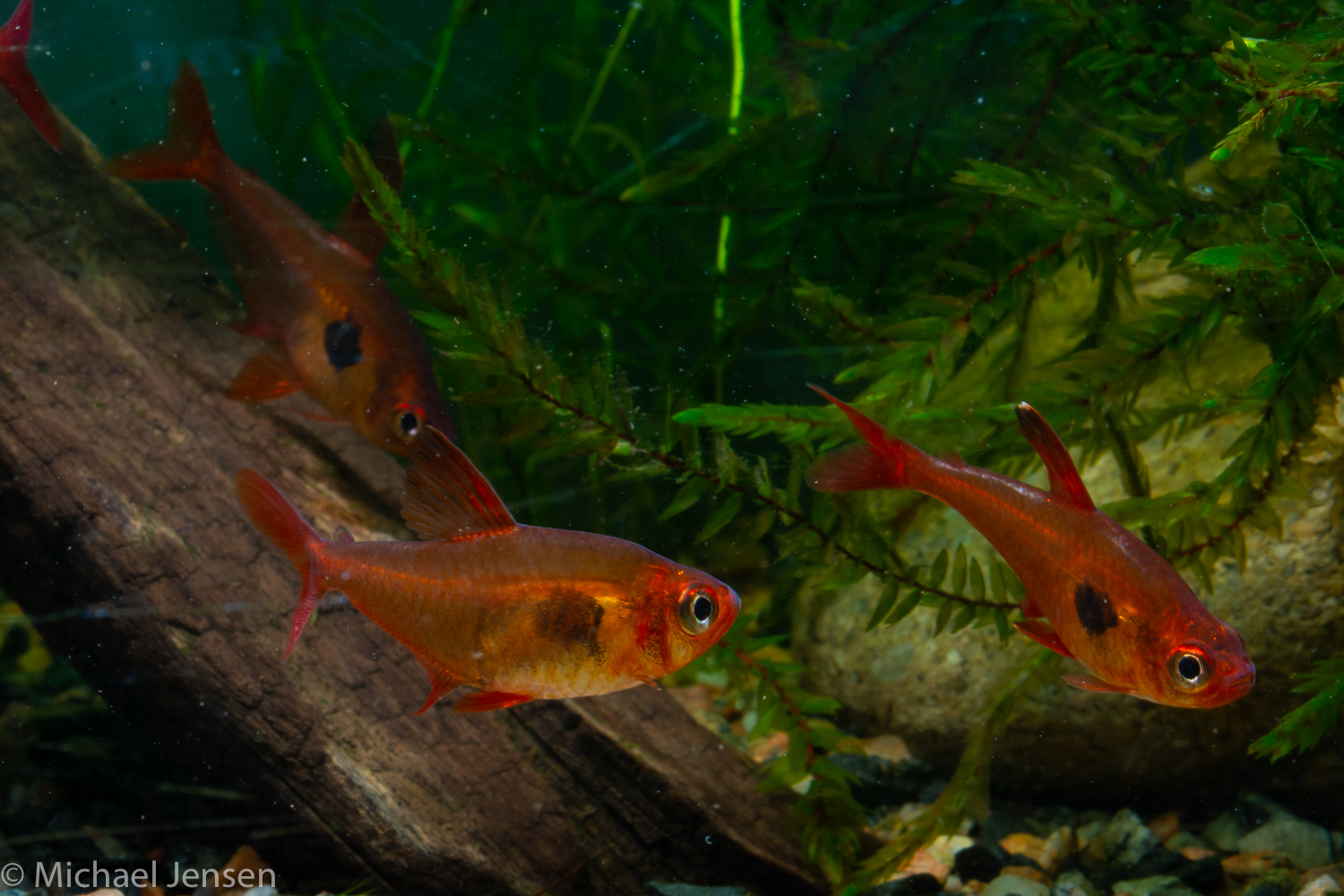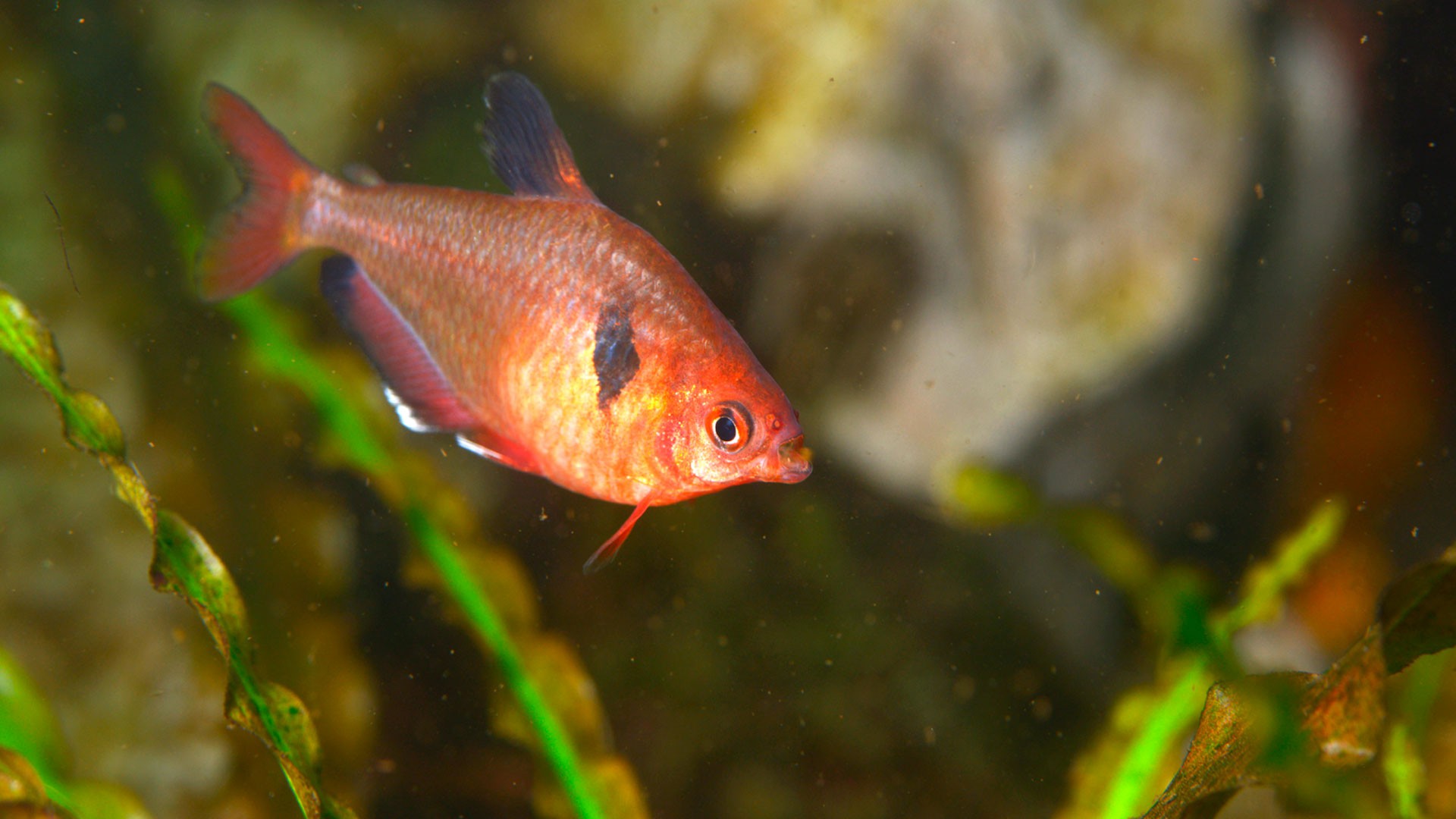

Gradually add harder water to accustom the young. The Black phantom tetra, Hyphessobrycon megalopterus, is actually red in the wild The reasons for it being bred into black-blue forms (especially the. They swim freely after the 6th day, but most of the time they remain hidden in the plants. Although they may tolerate harder water, for. At birth, the fry tend to remain at the bottom of the tank and then settle on the surface. The Red Phantom Tetra is a very attractive and peaceful small shoaling fish that is well suited to a community. As soon as they appear, remove the parents and be very careful with the light that deteriorates the eggs (do not hesitate to protect your breeding aquarium more at this stage). The striking color pattern of the semi-transparent red body is accented. The female expels about 200 eggs by making sharp turns. The red Phantom Tetra is a colorful addition to any freshwater community aquarium. The spawning is very visible, the male coming to stick to the female's side. Their fins, typically featuring a deeper. Males develop long fins, and the females have. Introduce a couple that you have selected into this tank, preferably in the evening (they should be between 8 and 10 months old for a better chance of success). This colourful fish is known for its vivid red, diamond-shaped body which has a black blotch around the stomach area. The Red Phantom Tetra is similar in shape and temperament to the Black Phantom Tetra but is predominantly red. If necessary, use osmosis water to achieve these parameters. The ideal water parameters are a temperature of 24☌ (75☏) and a pH of 6/6.5 and a Gh of 5. Use floating plants to strongly dim the light because the aquarium must be very dark (eggs are afraid of light). Receiving its name from its black translucent. Prepare a 20-litre (4 Impg Gal / 5 US Gal) aquarium equipped with a small filter (perlon + peat), an immersion heater and fine-leaved plants such as java moss and Myriophyllum. The red Phantom Tetra is a very peaceful, schooling fish that comes from the regions of Central Brazil. These fish also thrive in water with a pH of 5.5–7.5, and the tank water should stay between 72–78℉.As for its cousin the Black phantom tetra (Hyphessobrycon megalopterus), the reproduction of this species is quite difficult (due to fertilization problems). Red phantom tetras prefer a large tank that is at least 24 inches long. The habitat of appropriate tetra-friendly fish tanks includes plants and other animals that are appropriate to keep as companions to your red tetra collection. So closely copy the water conditions of the waters of the upper Amazon River in your aquarium. The watercourse of the Amazon River is home to fields of aquatic grasses or floating meadows, water lilies such as the Victoria amazonica, giant floating lily, and lianas. It is plant-rich, and the decaying plant matter contributes to the unique environment that the tetras thrive in.

The Amazon River is a blackwater environment with a slightly acidic pH. The conditions you keep your red phantom tetras in should mimic their natural environment. The Red Phantom Tetra is a beautiful fish endemic to the Rio Orinoco watershed in Colombia and Venezuela, inhabiting sluggish and clear waters where. You should replace carbon in the water filter after copper-based treatments. Add antibiotics and copper-based treatments to the tank water to alleviate the parasitic load and give the fish a chance at recovery. Parasitic diseases - commonly called “Ich”.Fungal diseases - like Ichthyosporidium require antibiotics and antifungal medications can be obtained from an aquatic vet. Red phantom tetra’s are light and peaceful which should all the time be stored in a bunch of at least 5 individuals in a tank with a darkish substrate that can improve their coloration.Remove the affected fish, place them in a quarantine tank and administer medication. These conditions need to be treated with antibiotics. Bacterial infections - such as red pest, columnaris, and tail and fin rot. I have about 19 red phantoms, 25 wild green neons, 5 flying foxes, 3 khuli loaches, 1 zebra loach, 1 gold spotted goby, 5 or so rummynose tetras, a bunch of.


 0 kommentar(er)
0 kommentar(er)
